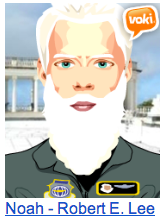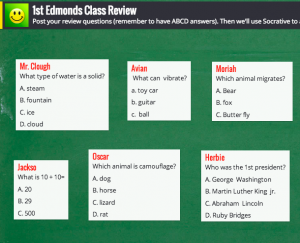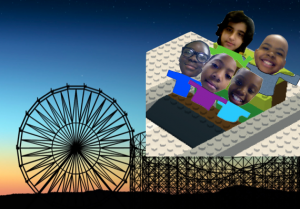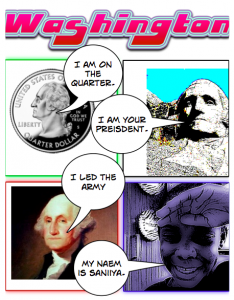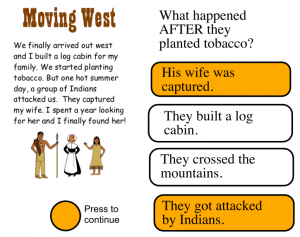3rd Grade Greece & Rome Comics
 Third graders at Holladay have been studying ancient Greece & Rome in social studies (SOL3.1,3.4,3.7), and they have been learning about narrative elements such as characters, setting, problem, and solution in language arts (SOL3.5). So today students in Ms. Middleton’s class created Greece & Rome comics that included those narrative elements. First they chose whether to make a comic about ancient Greece or ancient Rome, and I introduced them to a cool website for making comics online called StoryboardThat. Each of them logged in with their Google accounts and chose a blank template with three panels. I explained that the first panel would be the problem, the middle panel would show the characters trying to solve the problem, and the last panel would be the solution. Now the students had to start brainstorming problems that people in ancient Greece or Rome would face. They had lots of good ideas relating to the occupations people had like famines for farmers, storms for traders, and battles for soldiers. Next we discussed what kinds of settings would be appropriate. They pointed out that Greece and Rome had hills, farmland, and both were located near the sea. I showed them how to pick a setting from the Scenes library that would be good for ancient Greece or Rome (HINT: look under the Historical or Outdoor tabs). I also showed them how to find appropriate characters by looking under the Historical tab. Finally I demonstrated how to change the colors and poses for the characters and how to add speech bubbles. The students spent the rest of the time creating their comics with narrative elements. We posted the finished comics to the classroom page, and you can take a look at some of them here.
Third graders at Holladay have been studying ancient Greece & Rome in social studies (SOL3.1,3.4,3.7), and they have been learning about narrative elements such as characters, setting, problem, and solution in language arts (SOL3.5). So today students in Ms. Middleton’s class created Greece & Rome comics that included those narrative elements. First they chose whether to make a comic about ancient Greece or ancient Rome, and I introduced them to a cool website for making comics online called StoryboardThat. Each of them logged in with their Google accounts and chose a blank template with three panels. I explained that the first panel would be the problem, the middle panel would show the characters trying to solve the problem, and the last panel would be the solution. Now the students had to start brainstorming problems that people in ancient Greece or Rome would face. They had lots of good ideas relating to the occupations people had like famines for farmers, storms for traders, and battles for soldiers. Next we discussed what kinds of settings would be appropriate. They pointed out that Greece and Rome had hills, farmland, and both were located near the sea. I showed them how to pick a setting from the Scenes library that would be good for ancient Greece or Rome (HINT: look under the Historical or Outdoor tabs). I also showed them how to find appropriate characters by looking under the Historical tab. Finally I demonstrated how to change the colors and poses for the characters and how to add speech bubbles. The students spent the rest of the time creating their comics with narrative elements. We posted the finished comics to the classroom page, and you can take a look at some of them here.


